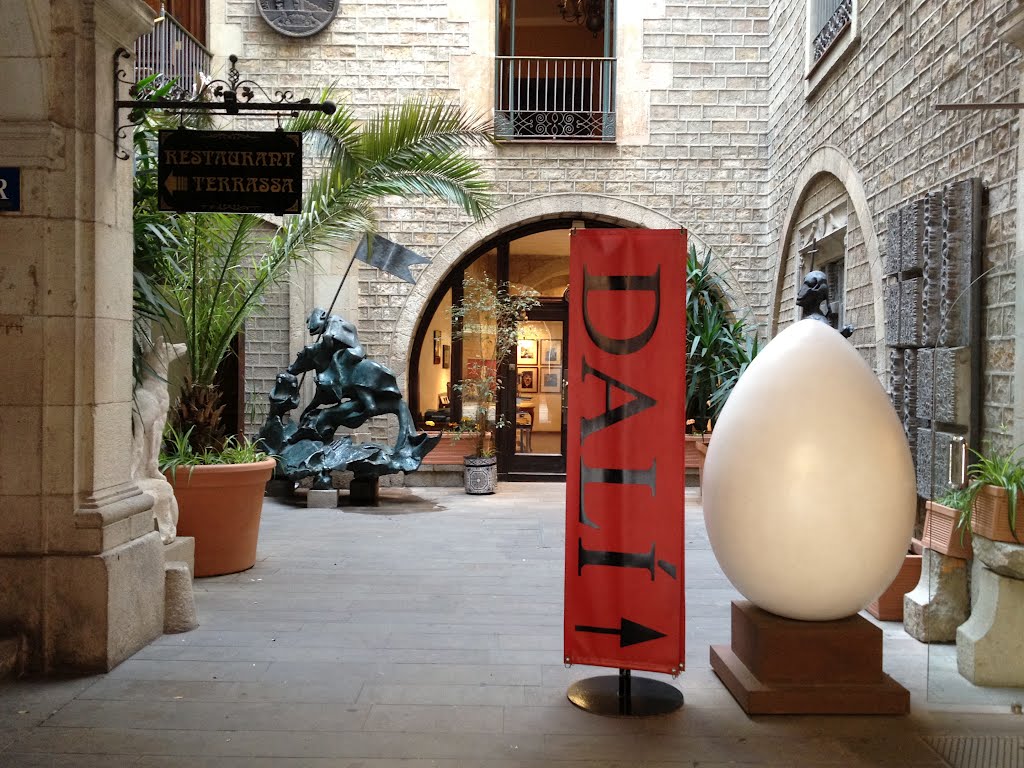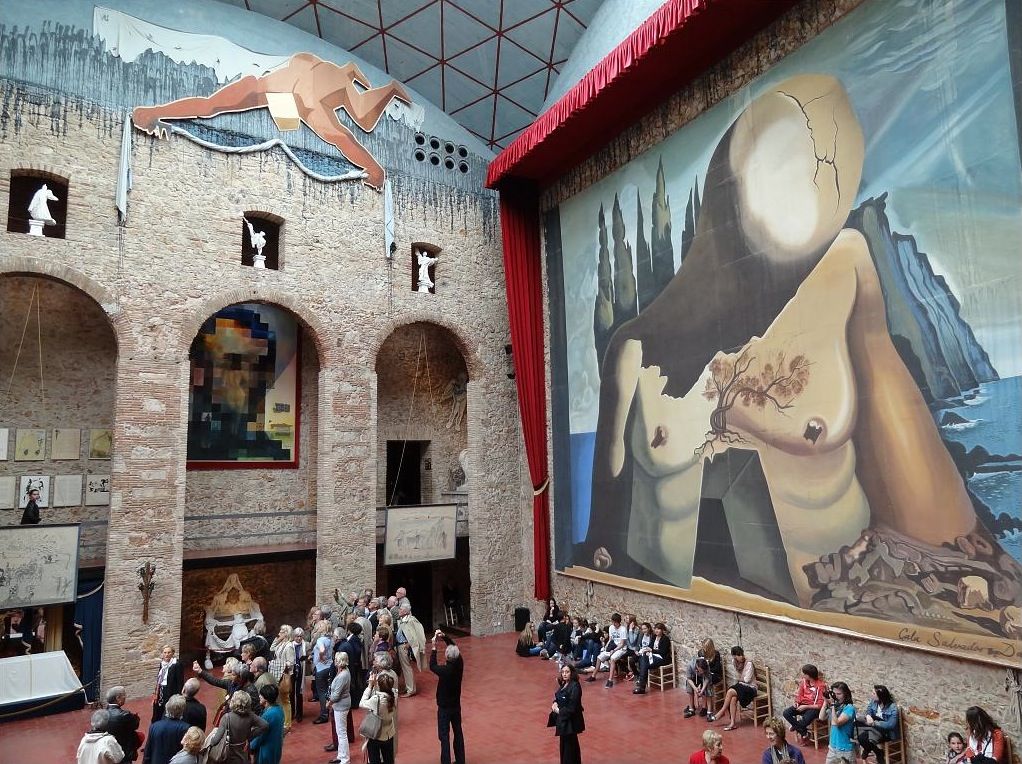Services | Fundació Gala – Salvador Dalí
- Group Reservations
- Toilets
Please download the Museum plan to prepare your visit
DALÍ THEATRE-MUSEUM PLAN
план
Museums
-
Dalí Theatre-Museum
-
Useful information
- Opening Hours and Prices
- How to get there
- Access Requirements
- Services
- Accessibility
- Policy for filming and taking pictures
- FAQ
- Ticket purchase and booking
- Reservations cancellation
- History
- The Collection
-
Exhibitions
- Current Exhibitions
- Past Exhibitions
- Virtual visit
-
Activities
- Current activities
- Past activities
- Antoni Pitxot
-
Useful information
-
Dalí·Jewels
- History
- The Collection
- Virtual visit
-
Gala Dalí Castle Púbol
-
Useful information
- Opening Times and Prices
- How to get there
- Access Requirements
- Services
- Accessibility
- Policy for filming and taking pictures
- FAQ
- Ticket purchase and booking
- Reservations cancellation
- History
- The Collection
-
Exhibitions
- Current Exhibitions
- Past Exhibitions
- Virtual visit
-
Activities and tours
- Current activities
- Past activities
-
Useful information
-
Salvador Dalí House Portlligat
-
Useful information
- Opening Times and Prices
- How to get there
- Access Requirements
- Services
- Accessibility
- Policy for filming and taking pictures
- FAQ
- Ticket purchase and booking
- Reservations cancellation
- History
- Images Gallery
-
Useful information
- Dalí by Night
- The Dalinian Triangle
Tickets & Tours – Dalí Theatre-Museum (Teatro-Museo Dalí), Barcelona
To add more items, please delete some old ones. View wishlist
Top activities in Barcelona
Explore Barcelona and beyond
Trip Inspiration
- Overview
- Tours & Tickets
Full-day Tours
Day Trips
Bus Tours
Cultural Tours
Arts & Design
Art Tours
Walking Tours
Nature and Wildlife Tours
Nature Walks
Historical Tours
Specials
Deals & Discounts
Free Cancellation
Likely to Sell Out
Skip-The-Line
Private Tour
Viator Exclusive
New on Viator
Filters
Frequently Asked Questions
The answers provided below are based on answers previously given by the tour provider to customers’ questions.
Q:
What’s the best way to experience Dalí Theatre-Museum (Teatro-Museo Dalí)?
Q:
What are Dalí Theatre-Museum (Teatro-Museo Dalí) hours of operation?
A:
Dalí Theatre-Museum (Teatro-Museo Dalí) hours of operation: Vary.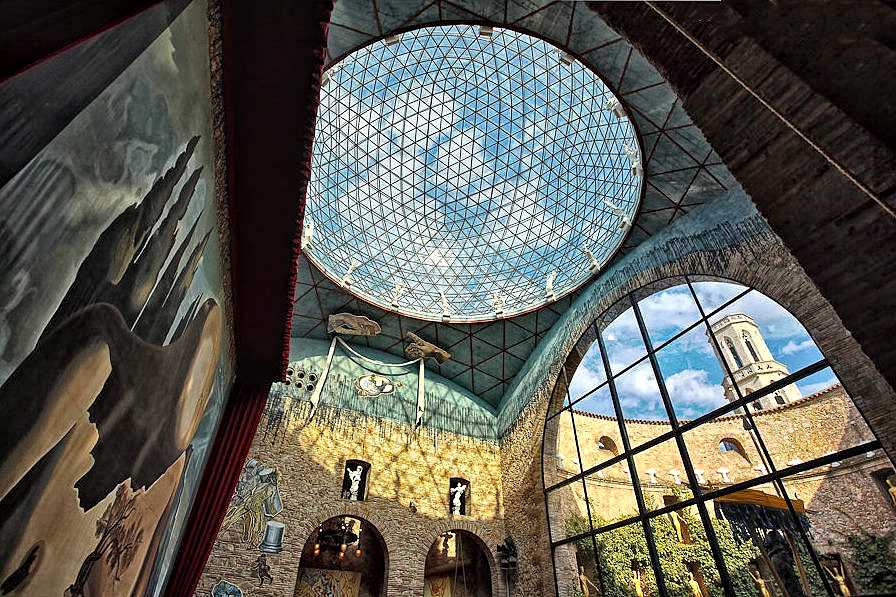
More Tours in Barcelona
- Art & Culture
- Audio Guides
- Classes & Workshops
- Food & Drink
- Kid-Friendly
- Likely To Sell Out
- Outdoor Activities
- Seasonal & Special Occasions
- Tickets & Passes
- Tours, Sightseeing & Cruises
- Travel & Transportation Services
- Unique Experiences
Things to do near Barcelona
- Things to do in Catalonia
- Things to do in Tarragona
- Things to do in Girona
- Things to do in Mallorca
- Things to do in Toulouse
- Things to do in Zaragoza
- Things to do in Ibiza
- Things to do in Montpellier
- Things to do in Valencia
- Things to do in Arles
- Things to do in Nîmes
- Things to do in Marseille
- Things to do in Avignon
- Things to do in Balearic Islands
- Things to do in Midi-Pyrénées
More attractions near Barcelona
- Empúries
- Pals
- Palafrugell
- Palamós
- Water World Lloret
- Valltordera Medieval Castle (Castell Medieval de Valltordera)
- La Roca Village
- Illa Fantasia Water Park
- St.
Benet Monastery (Món Sant Benet)
- Salt Mountain Cultural Park (El Parque Cultural de la Montana de Sal)
- Cardona Castle (Castell de Cardona)
- Forum Park (Parc del Forum)
- Museum of Natural Sciences of Barcelona (Museu Blau)
- Diagonal Mar
- Labyrinth Park of Horta (Parc del Laberint d’Horta)
Trending attractions
- Colosseum
- Eiffel Tower
- Hoover Dam
- Louvre
- Statue of Liberty
- Sagrada Familia
- Burj Khalifa
- Road to Hana (Hana Highway)
- Acropolis
- Roman Forum (Foro Romano)
- Molokini Crater
- St. Mark’s Basilica (Basilica di San Marco)
- Na Pali Coast
- Uffizi Galleries (Gallerie degli Uffizi)
- Great Barrier Reef
Dali Museum in Barcelona – Guide Barcelona TM
Not everyone knows that there is no Dali Museum in Barcelona. It is proposed to study his lifestyle and main creative features in other Catalan cities that played a great role in the biography of the great master.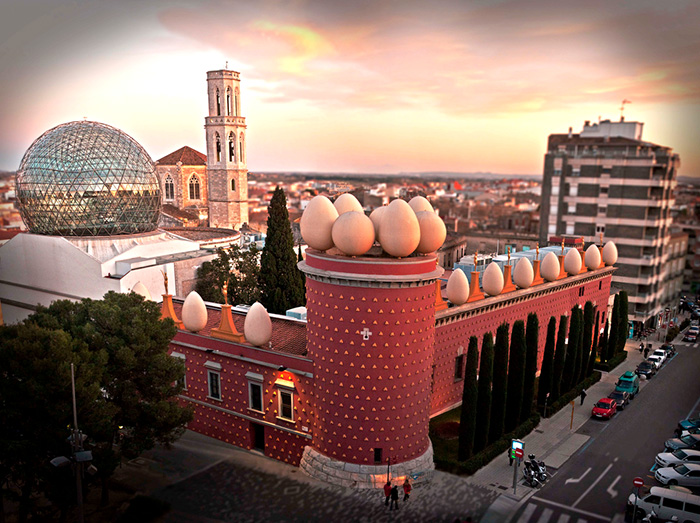
3 Dalí Museums near Barcelona will be a guide to the world of surrealism and constant creative experiments:
- Dalí Theater Museum in Figueres
- Dalí House Museum in Cadaqués
- Pubol Castle
Getting from Barcelona to any of them is not a problem. You can assemble a single Dali Museum near Barcelona from the elements presented in further objects.
1The best excursions to the Dali Museum
2The charm of the Dali Museum in Figueres
Salvador has worked tirelessly on this building to give the city a project that will outlive him. The mayor of Figueres asked the artist for a gift that could beautify the city and make it more attractive to visitors. The result was the Dali Theater Museum near Barcelona. Inside, there are many installations and works that immerse you in the world of a genius.
DALİ MUSEUM #dali #spain #barca” src=”https://www.youtube.com/embed/qoHExMou2nY?feature=oembed” frameborder=”0″ allow=”accelerometer; autoplay; clipboard-write; encrypted-media; gyroscope; picture-in-picture; web-share” allowfullscreen=””/>
The Dali Theater Museum is always interesting for tourists. This is due to the rich collection and the opportunity to observe in detail the synthesis of El Salvador’s ideas and further implementation.
The way from Barcelona will not be a problem thanks to the developed transport links between the cities. The Dali Museum could become another decoration of the capital of Catalonia, but the honor of introducing people to the work of a genius fell to other cities.
Dali Theatre-Museum
Figueres boasts a large collection of paintings by the master. A little over 10 years ago, guests of the city had the chance to see jewelry created according to the sketches of the creative genius of Barcelona. The Dali Theater Museum contains 39works characterized by symbolism and the desire of the artist to emphasize the role of eternal values.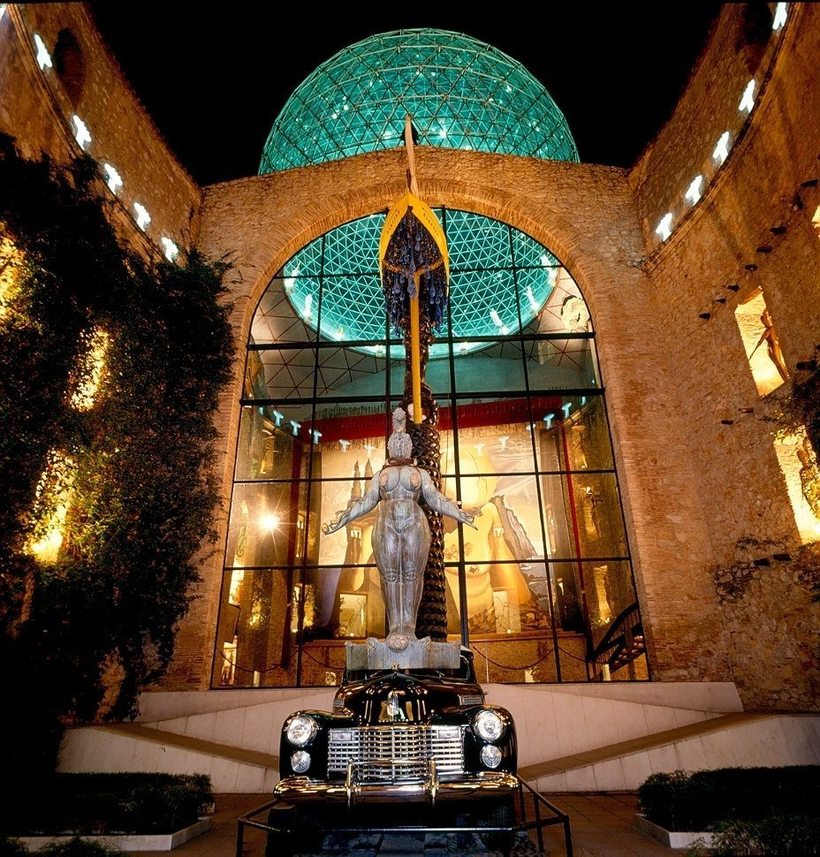
You can find out the opening hours of the Dali Theatre-Museum here.
Journey from Barcelona to the Dalí Theatre-Museum in detail here.
For those who do not want to delve into the structure of the transport system of Barcelona and routes to nearby cities, but want to visit one of the Dali museums, we offer an organized tour with a visit to Girona. The price of this service for one person is 76 euros. The client is waiting for a transfer from Barcelona from Plaza Catalunya, a visit to the Dali Museum with a guide and a tour of the colorful Girona.
For more information about the tour, follow the link.
Don’t forget to buy your museum tickets in advance. You can do this at the link online on the official ticket platform.
3The cozy atmosphere of the Dalí House Museum in Cadaqués
One of the main attractions of Cadaqués is the Dali House Museum, where Salvador lived and embarked on creative experiments.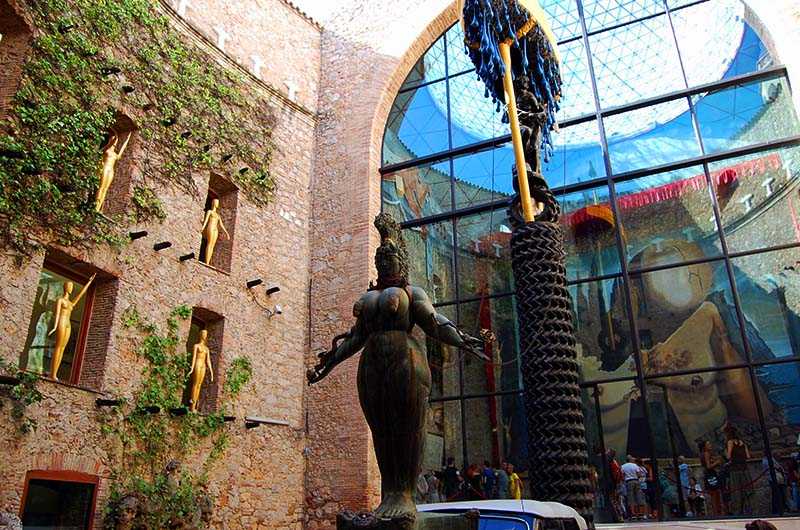
An inconspicuous fisherman’s hut was transformed step by step into a temple of surrealism dominated by characteristic images loved by El Salvador.
Cadaqués cannot be called the leading city within Catalonia, which is able to compete with Barcelona in some way, but the glorious pages of its history deserve the attention of travelers.
You can find out the opening hours of the Dali House Museum here.
Journey from Barcelona to the Dali House Museum in detail here.
4 You won’t find the Dali Museum in Barcelona, but yes in Pubol
The small and rather cozy village of Pubol has on its territory one of the Dali museums, which played an important role in the love affairs of the master of surrealism. El Salvador gave his beloved a castle that could survive in Barcelona since the Middle Ages.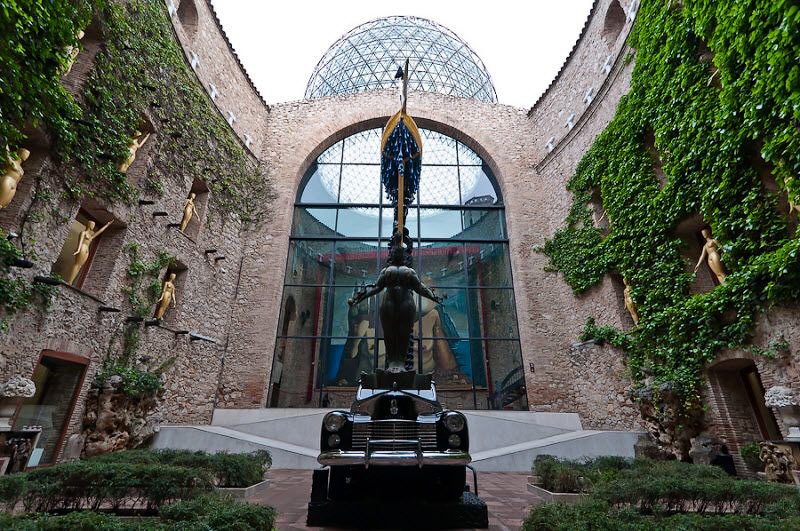
This Dalí Museum is surrounded by a wonderful garden, which is misleading when assessing the size of the territory. The garden is not amazing in size. A figurine of small parameters at the end of the alley creates the illusion of a grandiose size. With this technique, Dali managed to find a balance between the building and the natural landscape of the lands near Barcelona.
Spider-footed elephants, which can be found in any corner of the garden, attract attention. The Dali Museum in Barcelona is characterized by the rejection of the usual framework.
Dali the spider-legged elephant in the garden of Pubol Castle
You can find out the opening hours of Pubol Castle here.
Travel from Barcelona to Pubol Castle in detail here.
How to take a tour of the Dalí Museum in Barcelona
A trip to the Dali Theatre-Museum, which includes a visit to Girona, will reveal the world of the artist and the measured Catalan life near Barcelona.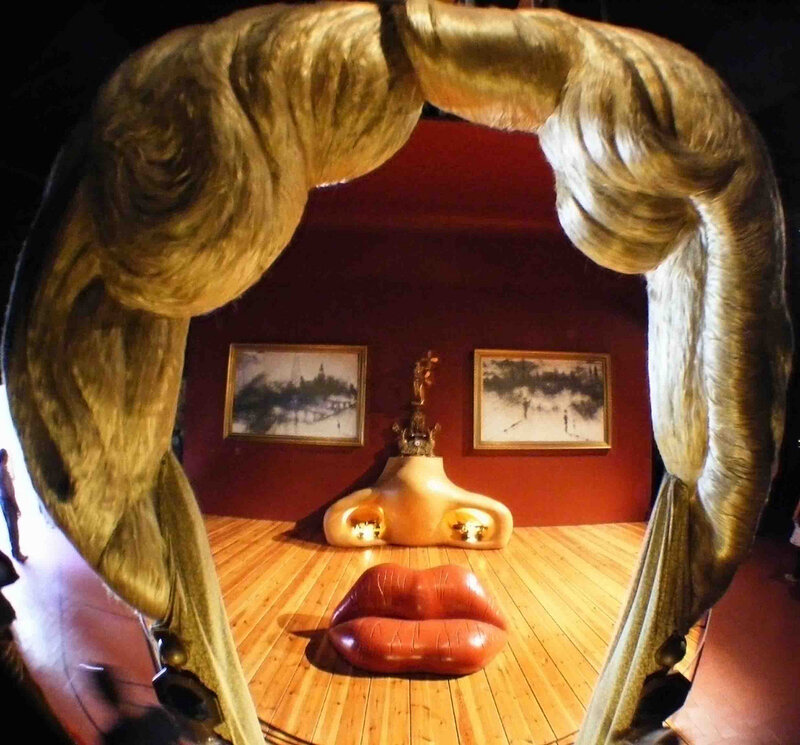
Details about the excursion to the Dalí Museum follow the link.
Earlier we wrote about the route in the footsteps of Dali on the Costa Brava.
- How to avoid queues at Barcelona attractions. Tickets for Sagrada Familia and Park Güell skip the line.
- How not to be deceived by local taxi drivers. Order a taxi in advance with fixed rates online. The most reliable service for ordering a taxi is KiwiTaxi .
- Excursions in Barcelona with locals will help you to get to know this city for real. The best way to get comfortable in an unfamiliar city is to walk around it with a person who has lived here for many years.
-
We advise you to take out travel insurance so that there are no unpleasant surprises while traveling to Barcelona.
- Barcelona City Pass is a one-stop card that makes organizing your holiday in Barcelona easier and saves you a lot of time and money.
- Hotels in Barcelona: is our selection and recommendations.
- Bus Turistic is a tourist bus and a great way to get to all the necessary monuments of Barcelona quickly, with a breeze and comfort.
- Drimsim is a universal international SIM card and a free travel application. Best prices, fast internet and worldwide calls.
- TAGS
- Dali Museum
Previous articleSalvador Dali – the life and work of the great Catalan
Next articleItinerary in Barcelona: what to see in 1, 2 and 3 days
WE ARE IN SOC. NETWORKS
NEW
Load more
TICKET REVIEWS
4.8
4.8 rating
based on 4.8 traveler reviews
VIEW REVIEWS
Salvador Dali Street in Barcelona
In the world there is not and, most likely, there will not be a Catalan who would glorify Catalonia more than the unforgettable Salvador Dali.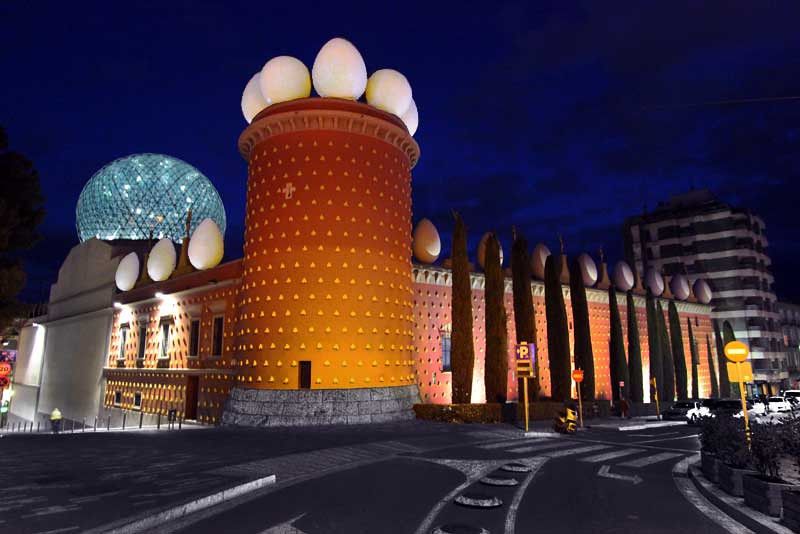
called “Dali’s triangle” receives more than 1.5 million visitors annually.
Tickets alone are sold for more than 10 million euros a year, and in general, the economic effect of the activities of museum objects associated with the name of Dali,
estimated at all in a pleasant amount – 180,000,000.
Yes, that’s right – almost two hundred million euros every year – it seems that this is more than enough to praise the brilliant Salvador every morning and every
evening without exception. However, in reality this is not entirely true.
As proof, I will cite a simple fact: among the more than 4,000 streets and several hundred squares of Barcelona, the beautiful Catalan capital, there is not a single one that wears
the name of a great Catalan. And this despite the fact that the mother of Salvador Dali was born in Barcelona, the father also had the honor to live in the capital and study at the University of Barcelona, and future parents met
Geniuses here, and here, in the Basilica of Merce, once got married.
This is despite the fact that interest in the work of Salvador Dali today is as high as ever, and exhibitions of his works, even minor ones, are accepted in any country of the world with a bang. This is despite the fact that one of
most ordered excursions, for example, with us – this is just a journey into the wonderful world of surrealism, at Salvador Theater Museum
Dali in his hometown in Figueres – which, again, speaks volumes about how “useful” Dali is for the Catalan economy.
So why, despite all these blessings, with which, like a golden rain, the artist showered his small homeland, in Catalonia there is still a very contradictory attitude towards the odious figure of the Maestro, and in
Barcelona, as we found out, and do not want to give him even a modicum of respect?
Probably the whole point is in the political views of Salvador Dali – you will say, and you will certainly be right. By the end of Maestro’s life, everyone completely forgot that once, at the age of 19years, his
was detained by the police for attaching the then banned “señera” (national Catalan flag) to the bow of the boat,
and after that he ended up in a Girona prison for left-anarchist views.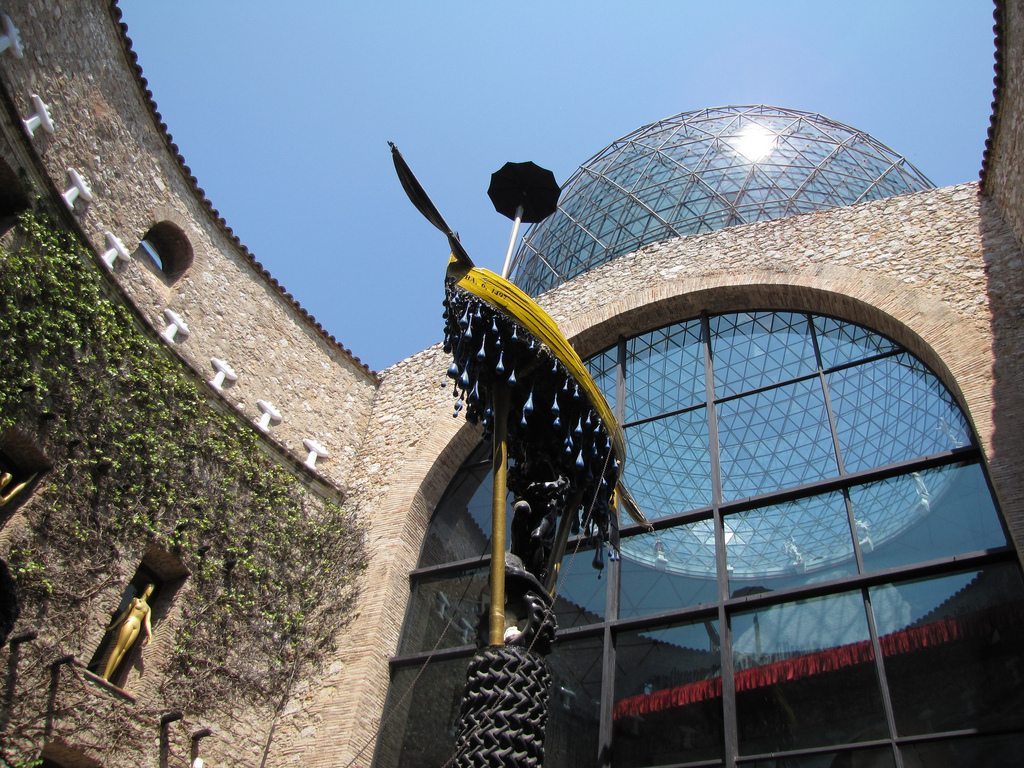
It is clear that talking about the political views of Salvador Dali is a very thankless task, given how many times in his life he changed them in the most radical way.
From an almost communist ideology, he quickly and painlessly went over to an apology for the dictatorship of Francisco Franco, and in recent years he lived as an inveterate monarchist. To nationalism of any kind, in
including Catalan nationalism, Salvador Dali, especially in adulthood, was purely negative, and this attitude was constantly declared in public.
Here are three incredibly good reasons for you not to like Dali in Catalonia. Firstly, dictator Francisco Franco is still fiercely hated here. Secondly, historically and to this day here
kings are strongly disliked – especially in the province of Girona, where Salvador Dali comes from. And thirdly, Catalan nationalism is an absolute “sacred cow” for many residents of the region,
no one is allowed to encroach on the bright name of which.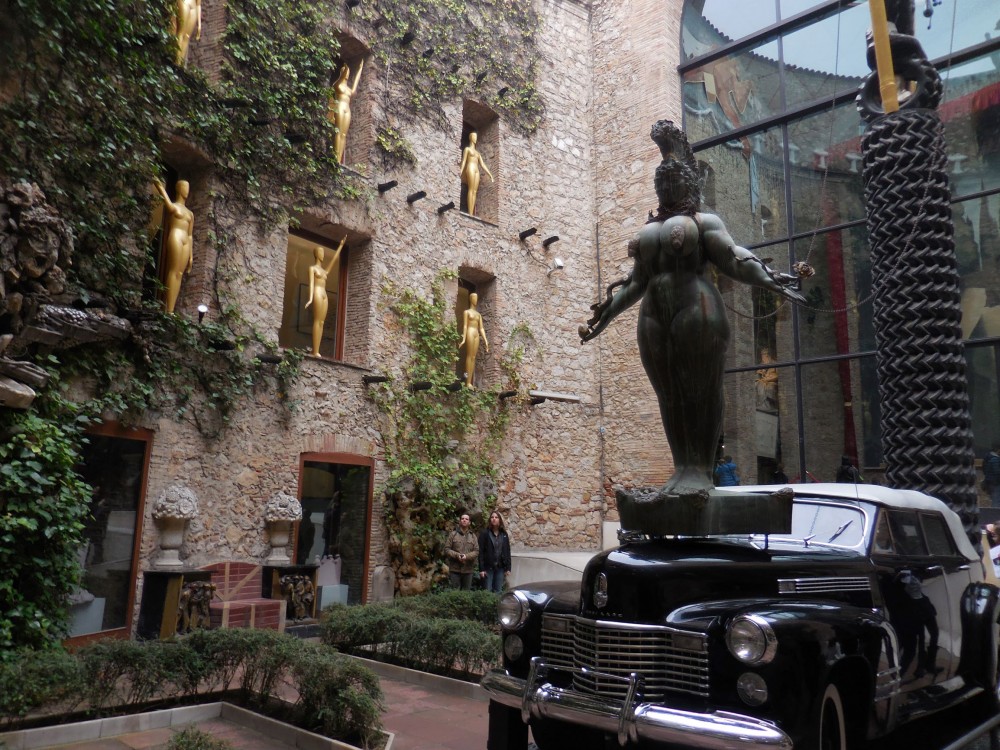
All this, of course, is true, and all this is important, but the main reason not to love Salvador Dali lies in his will – in the very will that is in Catalonia, and, in
features, in Barcelona they still cannot forgive him.
Let’s touch on this issue in more detail. The penultimate version of the joint wills (then Gala was still alive) was signed by the Dali spouses on December 12, 1980. According to him,
after the death of Dali and Gala, half of their property was placed at the disposal of the Kingdom of Spain, and the second – to “the Catalan people in the person of the regional government or any other institution,
which will represent him.
Note that in this will, Dali especially singled out a new clause that read: “I strongly recommend that the Catalan government remember how much I have always been
dear is my museum in Figueres.”
In other words, according to this option, all sisters received earrings, and Dali’s inheritance, after the death of him and his wife, was to be divided between
Catalonia and Madrid.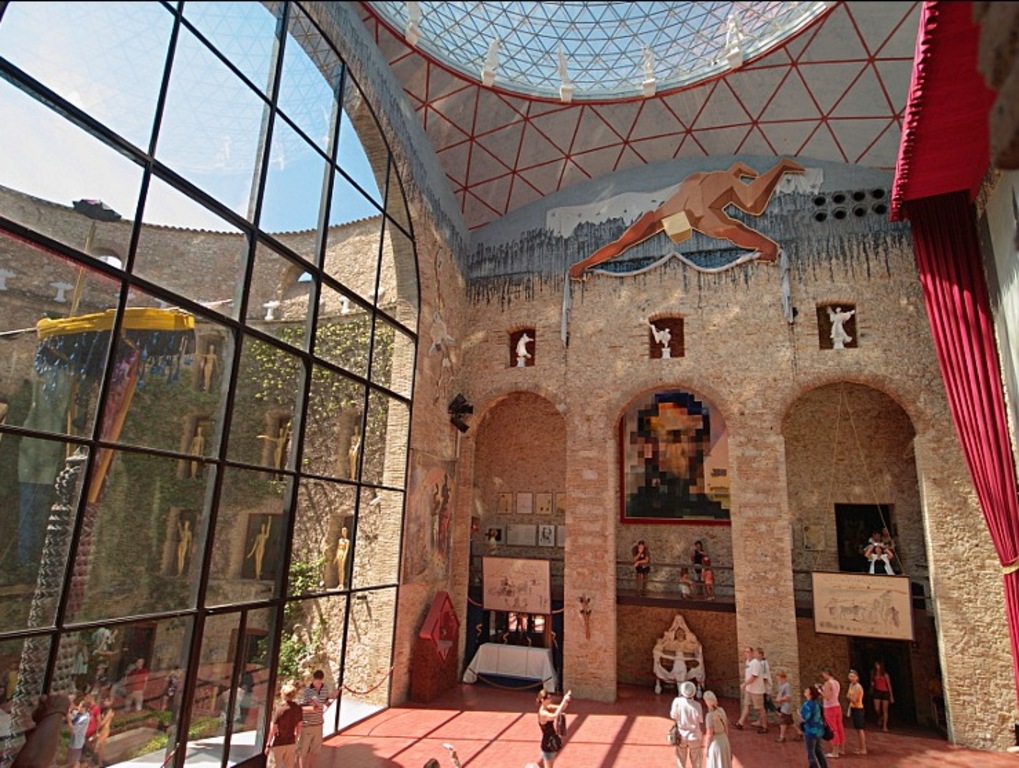
courted the artist, hoping that all sorts of bonuses and curtsies addressed to him would eventually induce him to change the text of the will and write everything to one of the two interested
sides.
The battle, frankly, flared up serious – great cultural values were at stake. The then President of the Generalitat (Catalan
government) – Jordi Pujol, unobtrusively trying to persuade the Maestro to the side of Catalonia. In addition, in 1981, for services in the field of art, Salvador Dali was awarded the highest award.
Catalan government – Gold medal of the Generalitat.
However, it was difficult to compete with the center. The Madrid authorities turned a blind eye to Dali’s tax problems, of which he always had plenty, and after the death of Gala at 1982
year and completely showered El Salvador with favors.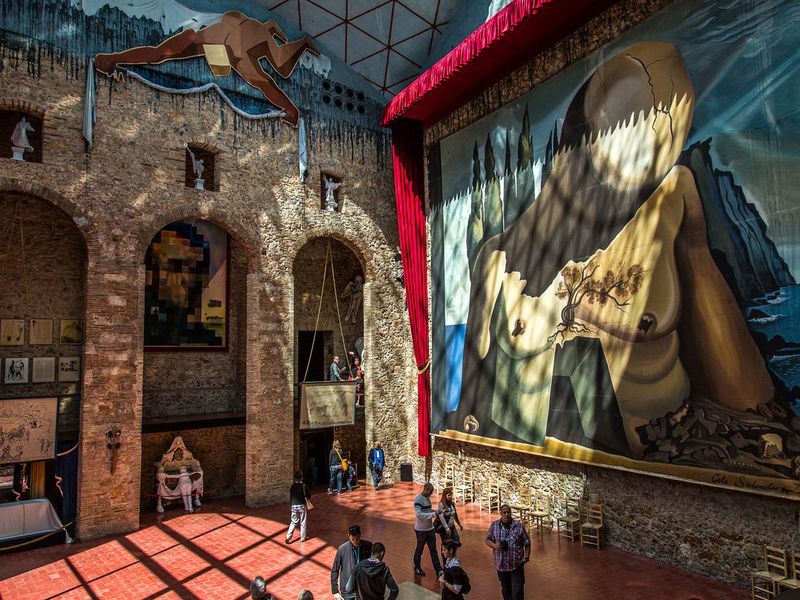
Two weeks after the death of Gala, King Juan Carlos bestowed on Dali the title of Marquis. In addition, the Spanish government expressed a desire to buy any two
his work and paid for them the equivalent of 500,000 pounds sterling – the money for those times (and for these) huge. The transaction took place, and these consequences were listed on a special
on this occasion, an account opened in Figueres and intended for “housekeeping, hiring nurses, medical staff,” etc.
The king and queen repeatedly met with the genius in person – needless to say, how delighted these meetings were, who bowed to the monarchy and personally very
sympathetic to King Dali!
Subsequently, by the way, it was King Juan Carlos and Queen Sofia who headed, at the personal request of the artist, the Gala-Salvador Dali Foundation, an organization that to this day
the day governs the entire legacy of the artist.
In summary, we note: Madrid won.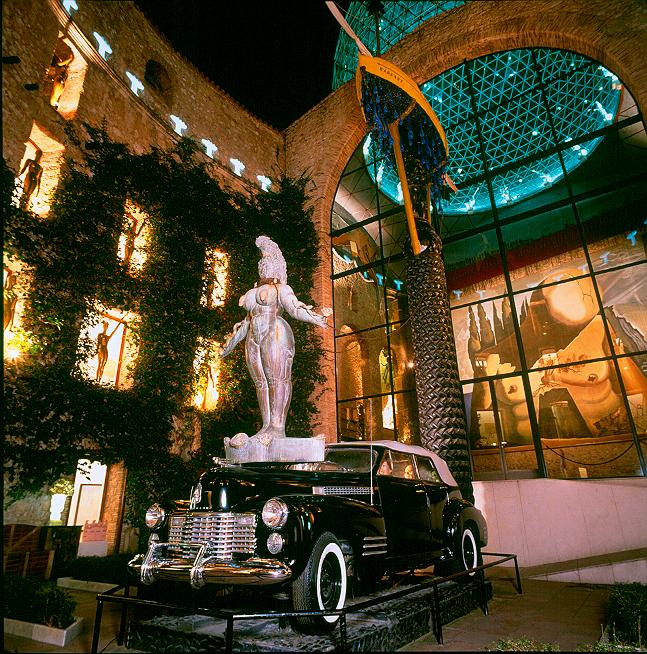
left all his property to the Spanish state “with an urgent request to protect, protect and promote his work.”
On December 23, 1983, in the presence of the same notary who certified Dali’s signature on his new will, the Gala-Salvador Dali Foundation, already mentioned by us, was established.
– a private institution headed by kings.
This Fund was given the utmost importance. “Now I dream of realizing the highest of my desires by founding a Foundation whose influence will go beyond the borders of the Fatherland.
The foundation must become the basis for a continuous influx of cultural values, for which I wish with love in my heart Spain, Catalonia, Ampurdan and my dear Figueres.”
And then for Salvador Dali came the hard time of the dead spirit and stubbornly continuing to cling to the life of the body.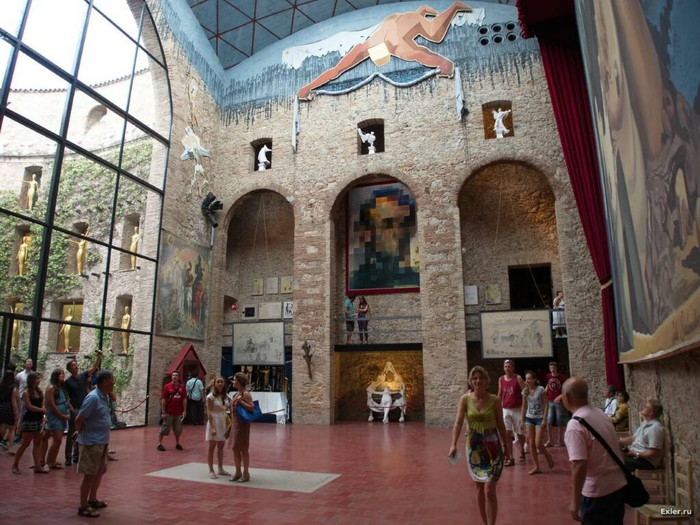
they did not leave him with their attention, visiting, for example, the artist in the Barcelona clinic “Kiron” where the completely decrepit Dali was delivered more and more often.
Finally, January 1989 arrived. Dali was dying, but there was always a notary at his chamber in Barcelona or Figueres.
Subsequently, the then mayor of Figueres, Maria Lorca, hinted a couple of times with all caution that the Maitre, in his presence, more than once spoke of his intention to contribute
some changes to the 1982 will. It is possible that the artist had in mind exactly the very point according to which neither Catalonia nor Barcelona appeared in the will in any way.
word.
One way or another, it is pointless to talk about it now, since these changes have not been made. Perhaps Dali, who was in a dying state, simply
forgot about his intention or did not have the strength to bring it to the end.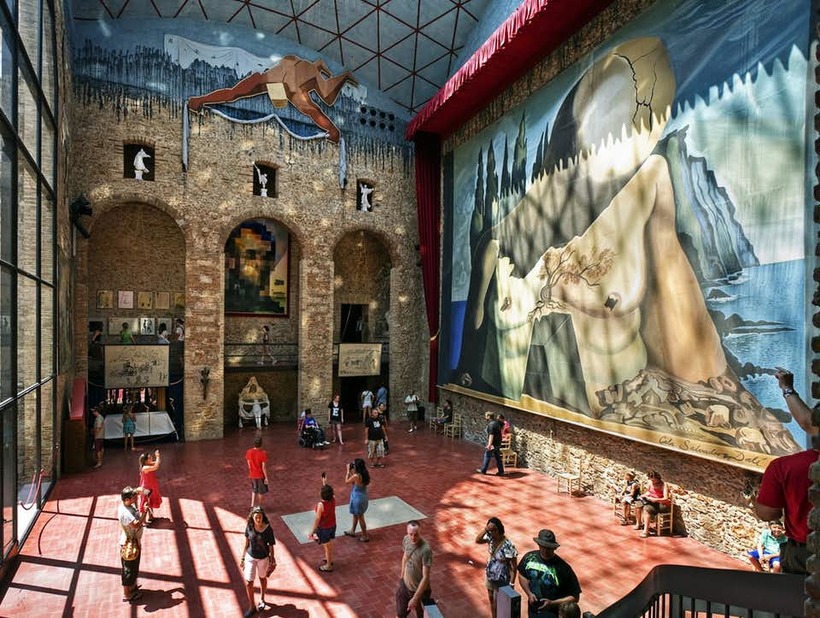
At 10-15 am, on Monday, January 23, 1989, the greatest of the creators of the 20th century expired. Cause of death, according to the official conclusion –
“heart failure complicated by pneumonia progressing irreversibly to severe respiratory failure leading to cardiac arrest.”
On the evening of January 26, the artist was buried in the church of St. Peter, located directly opposite the museum – it was here that on the ninth day after the birth, little Salvador was once baptized. say goodbye to
15,000 people came as a great surrealist.
And already on January 30, a scandal erupted. According to Spanish law, the last will of the deceased can be made public no earlier than two weeks after death, but the press did not doze off – and the morning
issue of the popular weekly “Cambio 16” came out with a giant headline: “Dalí disinherits Catalonia.” The same issue contained the devastating details of the will, for the Catalans, in which
the total priority of Madrid was unambiguously and unequivocally affirmed.

 Benet Monastery (Món Sant Benet)
Benet Monastery (Món Sant Benet)